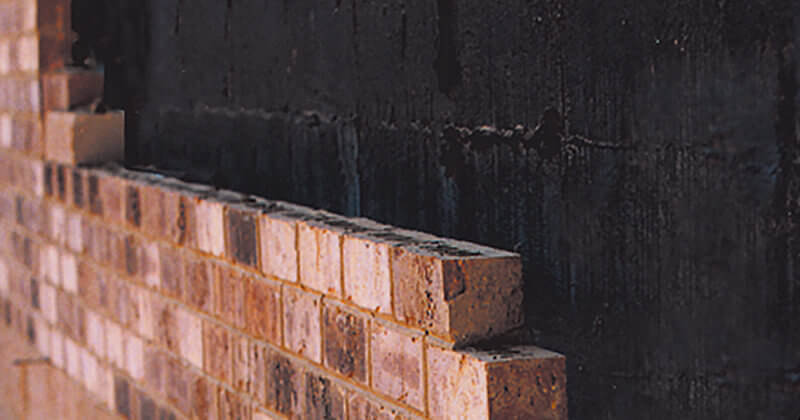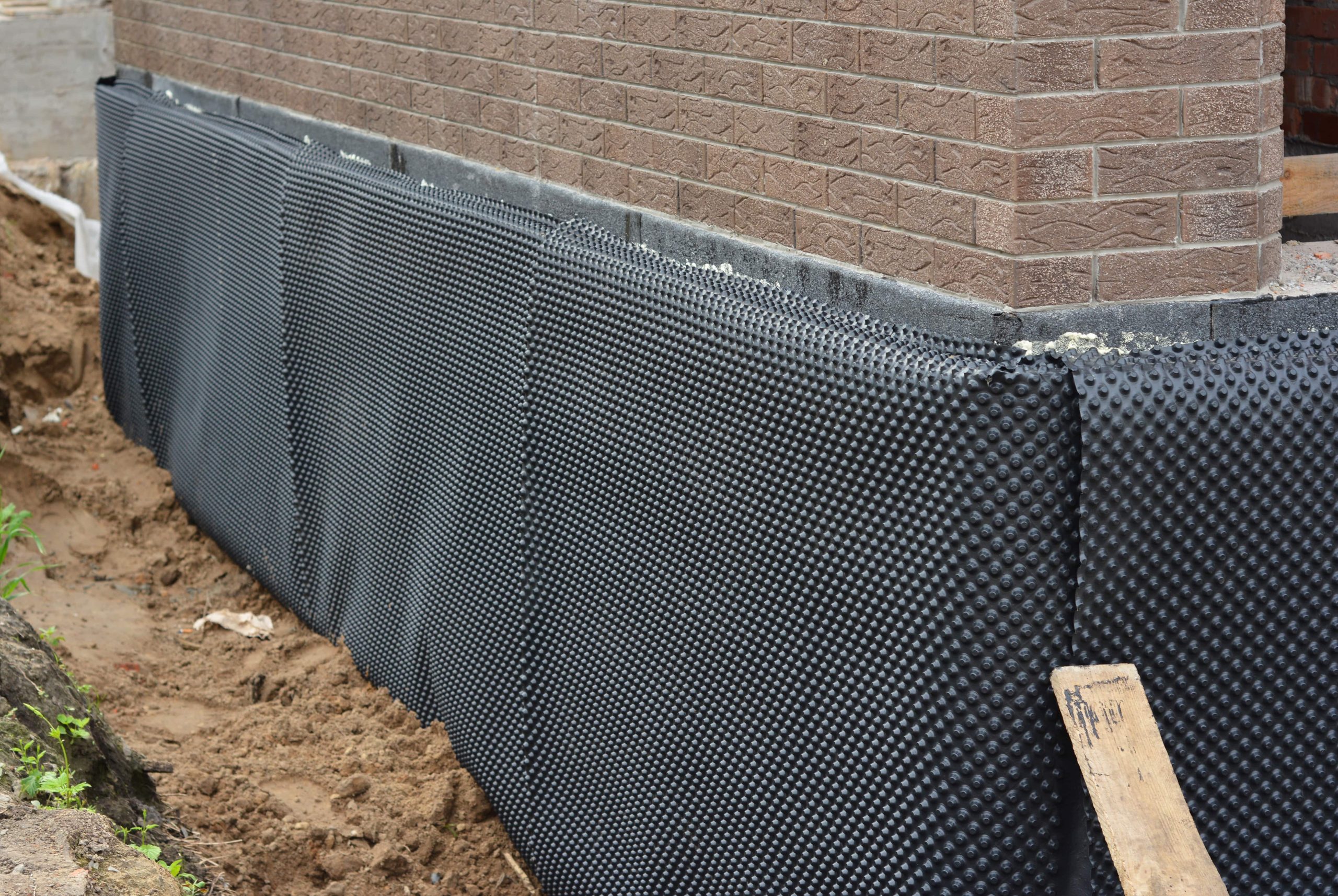Safeguard your foundation with proactive damp removal newcastle
Safeguard your foundation with proactive damp removal newcastle
Blog Article
Exploring the Numerous Techniques and Solutions for Effective Damp Proofing
Dampness in structures presents significant challenges to both structural honesty and indoor air quality. Different strategies and solutions have emerged to fight this pervasive problem. From typical damp-proof membrane layers to cutting-edge chemical therapies, each approach offers distinct advantages. Comprehending these alternatives is important for efficient wetness control. Selecting the best solution depends on particular building problems and demands, triggering additional exploration right into the most efficient damp proofing approaches available.
Comprehending the Root Causes Of Moisture
Wetness can develop from different sources, comprehending these causes is vital for reliable removal. Typically, dampness stems from three primary resources: climbing moist, passing through moist, and condensation. Rising moist occurs when groundwater takes a trip up-wards through permeable materials, such as block or stone, typically because of an absence of an efficient obstacle (damp proofing newcastle). Penetrating wet is usually caused by exterior factors, consisting of roof leakages, faulty seamless gutters, or damaged wall surfaces, allowing water to penetrate a property. Condensation, on the various other hand, results from excess dampness in the air, commonly exacerbated by bad ventilation and temperature level distinctions, bring about water droplets developing on surface areas. Identifying these underlying problems is essential, as each kind of moisture calls for a customized method for removal. Correct assessment assists in establishing the most efficient remedies, inevitably protecting the structural stability of a structure and boosting interior air quality
Conventional Damp-Proof Membrane Layers

Chemical Damp-Proofing Solutions
Chemical damp-proofing remedies use a cutting-edge technique to avoid wetness invasion in buildings. These methods generally entail the application of fluid chemicals that pass through stonework and develop a barrier against climbing wet. Commonly utilized chemicals include silanes, siloxanes, and various other water-repellent representatives that respond with surface materials to produce a hydrophobic layer.The application process typically requires boring openings into the walls, injecting the chemical service, and allowing it to treat. This method is particularly advantageous for older frameworks where conventional damp-proof membrane layers might be unwise. In addition, chemical damp-proofing can be much less turbulent and much more affordable than considerable remodelling projects.While efficient, these remedies depend on proper application and environmental problems for peak efficiency. Routine upkeep and tracking are important to assure the long life of the damp-proofing therapy. In general, chemical damp-proofing stands for a versatile alternative for guarding structures versus moisture-related damages
Dental Caries Wall Surface Building And Construction Techniques
Cavity wall surface building and construction strategies use many advantages, especially in wetness control and power performance. By including an air space between two layers of masonry, these wall surfaces effectively reduce water access while improving insulation. This combination not only safeguards structures from dampness but also adds to reduced power intake.
Benefits of Cavity Wall Surfaces
When thinking about effective moist proofing techniques, the benefits of tooth cavity wall surfaces attract attention plainly. Dental caries wall surfaces consist of 2 different layers, developing an air space that efficiently decreases moisture penetration. This style reduces the threat of wetness, as the external wall acts as a barrier against rain and water ingress. Additionally, dental caries wall surfaces improve thermal insulation, which contributes to energy efficiency by decreasing warmth loss. They also provide audio insulation, aiding to create a quieter indoor setting. In addition, the air void enables ventilation, which helps in dampness control and reduces the possibility of mold and mildew development. These benefits not only enhance the total convenience of a structure but likewise add to its durability and structural honesty.
Wetness Control Strategies
Reliable dampness control methods are important in dental caries wall construction to assure long-lasting protection versus moisture. One primary approach involves the unification of weep openings, which facilitate water drain from the tooth cavity, stopping build-up. In addition, making use of breathable membranes can assist manage dampness levels while permitting trapped vapor to leave. Proper placement of insulation is additionally important, as it ought to not block drainage courses. Guaranteeing that the external leaves of the tooth cavity wall surface are built with waterproof products improves overall longevity. Regular maintenance checks are important to determine any kind of blockages or damage early, securing the structure's stability. Inevitably, a combination of these methods creates a robust defense versus dampness intrusion in tooth cavity wall surfaces.
Insulation and Power Effectiveness
Insulation plays an important function in improving energy efficiency within tooth cavity wall surface building. By incorporating insulating products, these walls create a thermal obstacle that reduces heat loss and lowers power usage. Reliable insulation not only helps preserve a steady interior temperature yet likewise minimizes the threat of dampness, as it avoids condensation within the wall tooth cavity. read more Various techniques, such as using inflexible foam boards or mineral woollen, can be employed to achieve suitable insulation performance. Furthermore, proper installation is important to ensure that voids and gaps are minimized, which can or else jeopardize energy efficiency. Inevitably, a well-insulated cavity wall surface contributes considerably to overall sustainability and lowers home heating and cooling prices for house owners.
External Damp Proofing Methods
Outside damp proofing approaches are important for protecting structures from moisture seepage. Two effective strategies include the application of waterproof membrane layers and the installation of French drains pipes. These services help minimize water build-up and preserve the honesty of buildings.
Waterproof Membrane Application
While different techniques exist for avoiding dampness access, the application of water-proof membrane layers remains a very reliable external wet proofing technique. These membrane layers are typically made from products such as polyethylene, rubber, or changed bitumen, supplying a durable barrier against water infiltration. The installation procedure entails using the membrane to the outside surface areas of structures or walls, ensuring full coverage to stop leaks. Correct adhesion and sealing at joints are critical to taking full advantage of performance. Water-proof membranes can be used in various kinds, consisting of liquid coverings and sheet membrane layers, enabling flexibility based upon the certain demands of the framework. This method not only secures structures from dampness but additionally improves their long life and architectural stability.
French Drain Setup
One effective method for managing groundwater and stopping wetness accumulation around a building's structure is the installment of a French drainpipe. This drain system consists of a trench loaded with crushed rock and a perforated pipeline that reroutes surface area water far from the structure. Correct installation calls for careful planning, making certain that the drainpipe inclines away from the structure to promote ideal water circulation. Furthermore, the location of the drainpipe is crucial; it must be positioned in areas susceptible to pooling or excess wetness. Normal upkeep, including clearing up debris from the crushed rock and making sure the pipeline stays unblocked, is crucial for long-lasting performance. Eventually, a well-installed French drainpipe can substantially minimize the risk of water-related problems in structures and basements.
Inside Waterproofing Strategies
Inside waterproofing techniques are important for protecting a building's interior from moisture seepage and possible water damage. These approaches usually involve the application of specific products and techniques created to develop a moisture obstacle within the framework. One usual method is using waterproof finishings or sealers on wall surfaces and floors, which prevent wetness from passing through surfaces.Additionally, installing indoor drainage systems, such as sump pumps, can successfully manage water build-up in cellars and crawl areas. Another technique entails the use of vapor barriers, which are set up to hinder moisture motion from the ground right into living spaces.Moreover, attending to any kind of cracks or spaces in wall surfaces or structures with ideal sealants ensures an extensive protection versus water breach. By implementing these interior waterproofing approaches, residential property proprietors can considerably lower the risk of mold development, structural damages, and various other moisture-related problems. Correct implementation of these techniques is essential for lasting protection and building honesty.
Regular Upkeep and Assessment Practices
Routine upkeep and examination practices are important for guaranteeing the long-lasting performance of damp proofing services in any kind of structure. Routine checks allow homeowner to determine early indicators of wetness intrusion, such as peeling off paint, mold and mildew growth, and stuffy smells. These indicators can signify underlying concerns that need prompt attention.Inspections must be conducted a minimum of every year, concentrating on at risk locations like cellars, creep spaces, and outside wall surfaces. Throughout these analyses, building owners should check out sealants, drain systems, and air flow to confirm they operate correctly.Additionally, maintaining downspouts and gutters is crucial, as stopped up systems can bring about water build-up near the structure. Implementing a normal upkeep schedule, in addition to timely repair services, can considerably expand the lifespan of moist proofing actions and safeguard the architectural integrity of the structure. Proactive procedures ultimately add to the overall health and wellness and safety and security of the living environment.
Frequently Asked Concerns
How Much Time Does Damp Proofing Usually Last?
The period of wet proofing performance varies, normally lasting between 20 to half a century. Factors such as application quality, environmental conditions, and maintenance techniques significantly influence the longevity of the moist proofing treatment.

Can I Damp Evidence My Home Myself?
The specific pondered the usefulness of do it yourself damp proofing. With correct research and the right materials, it is possible. Nevertheless, they likewise identified the significance of professional advice to guarantee lasting effectiveness and prevent future issues.
What Are the Signs of Inadequate Damp Proofing?
Signs of inadequate moist proofing consist of persistent moldy odors, noticeable mold development, peeling paint, damp patches on walls, and wood decay - damp specialist newcastle. Property owners need to deal with these problems immediately to stop further damage and wellness issues
Does Damp Proofing Affect Indoor Air Quality?

Just How Much Does Professional Damp Proofing Price?
Expert wet proofing prices differ significantly, typically varying from $1,000 to $5,000 depending on the building's dimension, the degree of the moist problem, and selected techniques. Each situation calls for a customized analysis for exact rates. Commonly, dampness originates from three primary sources: increasing wet, penetrating moist, and condensation. When thinking about efficient wet proofing methods, the advantages of tooth cavity wall surfaces stand out plainly. Exterior damp proofing methods are important for shielding structures from moisture infiltration. While various methods exist for stopping dampness ingress, the application of water resistant membrane layers stays an extremely efficient outside moist proofing technique. Signs of inefficient moist proofing include consistent stuffy smells, noticeable mold growth, peeling paint, wet patches on walls, and wood decay.
Report this page